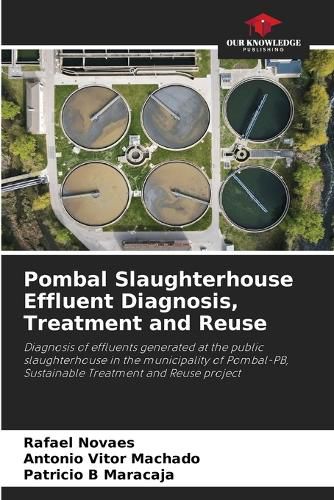Readings Newsletter
Become a Readings Member to make your shopping experience even easier.
Sign in or sign up for free!
You’re not far away from qualifying for FREE standard shipping within Australia
You’ve qualified for FREE standard shipping within Australia
The cart is loading…






The main objective of this research was to diagnose the effluent from the treatment system of the municipal slaughterhouse in Pombal - PB, characterizing it physically and chemically and evaluating its efficiency in terms of the parameters required by current legislation. As a field of study, the effluent treatment system of the municipal slaughterhouse in Pombal - PB, was evaluated by defining sample collection points for determining efficiency parameters, and the following analyses were carried out: Hydrogen Potential (pH), Total Phosphorus (FT), Total Nitrogen (NT), Chemical Oxygen Demand (COD), Biochemical Oxygen Demand (BOD5), Sedimentable Solids (SSed), Turbidity, Oils and Grease. The results of the parameters analyzed were compared with the legislation based on the CONSEMA 128/06 and CONAMA 357/05 resolutions. The analyses showed changes in some of the variables under study, demonstrating that it is not in compliance with the parameters stipulated by current legislation. In view of this situation, changes in the layout of the municipal slaughterhouse are recommended, in order to meet the requirements of the legislation and the adoption of reuse techniques for its sustainability.
$9.00 standard shipping within Australia
FREE standard shipping within Australia for orders over $100.00
Express & International shipping calculated at checkout
The main objective of this research was to diagnose the effluent from the treatment system of the municipal slaughterhouse in Pombal - PB, characterizing it physically and chemically and evaluating its efficiency in terms of the parameters required by current legislation. As a field of study, the effluent treatment system of the municipal slaughterhouse in Pombal - PB, was evaluated by defining sample collection points for determining efficiency parameters, and the following analyses were carried out: Hydrogen Potential (pH), Total Phosphorus (FT), Total Nitrogen (NT), Chemical Oxygen Demand (COD), Biochemical Oxygen Demand (BOD5), Sedimentable Solids (SSed), Turbidity, Oils and Grease. The results of the parameters analyzed were compared with the legislation based on the CONSEMA 128/06 and CONAMA 357/05 resolutions. The analyses showed changes in some of the variables under study, demonstrating that it is not in compliance with the parameters stipulated by current legislation. In view of this situation, changes in the layout of the municipal slaughterhouse are recommended, in order to meet the requirements of the legislation and the adoption of reuse techniques for its sustainability.